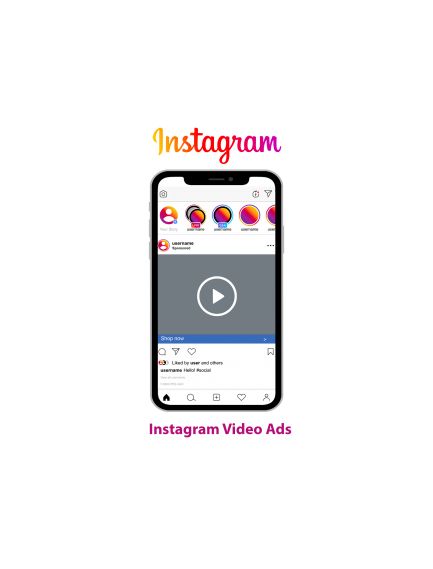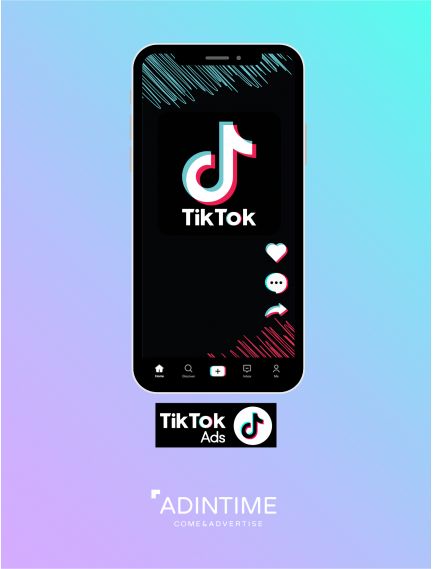Crafting a compelling communication strategy can seem like a daunting task. However, with the right techniques and a methodical approach, you can create a plan that will propel your brand to the forefront. Whether you are an ambitious startup or an established company looking to reinvent itself, this guide will unveil the secrets to designing a communication strategy that captivates your audience and surpasses your competitors.
1. Understanding the fundamentals of an effective communication strategy
A solid communication strategy rests on three fundamental pillars: clear objectives, a deep understanding of your audience, and an understanding of your market position. Developing a communication plan allows you to structure these elements coherently, ensuring effective and measurable implementation. A well-defined communication plan guides your actions and helps you achieve your goals by maximizing the impact of your messages.
Defining your communication objectives
Your communication objectives must be SMART: Specific, Measurable, Achievable, Realistic, and Time-bound. Whether it is to increase brand awareness, generate leads, or improve customer retention, well-defined objectives will guide all your communication actions.
Example of a SMART objective: "Increase engagement on our social networks by 25% in the next 6 months by posting interactive content daily and responding to all comments within 24 hours."
Identifying your target audience
Effective communication starts with a deep understanding of your audience. Use data analysis tools, customer surveys, and market studies to create detailed personas. These profiles will help you personalize your messages and choose the most appropriate channels to reach your audience.
Remember to explore the psychographic aspects of your audience, such as their values, interests, and behaviors, in addition to basic demographic data.
Analyzing your market position
Understanding your current market position is crucial to defining a communication strategy that sets you apart. Conduct a SWOT analysis (Strengths, Weaknesses, Opportunities, Threats) of your brand and examine the competitive landscape.
Identify your unique value proposition (UVP) and ensure it is reflected in all your communications. Your UVP is what sets you apart from the competition and gives your audience a reason to choose your brand.
2. Choosing the right communication channels for your campaign
An effective communication strategy leverages a judicious combination of channels to maximize the reach and impact of the message.
Outdoor advertising: OOH, DOOH, and MOOH
Outdoor advertising remains a powerful way to reach a broad audience. It comes in several formats:
- OOH (Out-of-Home): Traditional billboards.
- DOOH (Digital Out-of-Home): Digital screens in public spaces.
- MOOH (Mobile Out-of-Home): Advertising on moving vehicles.
Outdoor advertising is particularly effective for increasing brand awareness and can be geographically targeted to reach specific audiences.
Traditional media: print, radio, and television
Although the digital era is booming, traditional media remain relevant, especially for certain demographic segments.
- Print offers credibility and allows for detailed explanations.
- Radio reaches audiences on the go and offers great local flexibility.
- Television combines visual and auditory impact for a strong emotional impression.
These media can be particularly effective when integrated into a broader multichannel strategy.
Digital media: web, social media, and mobile
Digital media offer a powerful array of tools for targeted and measurable communication:
- Web: Websites, blogs, SEO, and SEM for increased visibility.
- Social media: Direct engagement with the audience on platforms like Facebook, Instagram, LinkedIn, and TikTok.
- Mobile: Apps, in-app ads, and SMS marketing to reach users on their personal devices.
The advantage of digital media lies in its ability to offer personalized experiences and generate valuable data on audience behavior.

3. Planning your multichannel communication strategy
Once your channels are chosen, it is time to plan a coherent strategy that integrates them all harmoniously.
Developing an editorial calendar
A well-structured editorial calendar is the backbone of your communication strategy. It should include:
- Publication dates for each type of content
- Themes and key messages for each period
- Channels to be used for each communication
- Responsible parties for content creation and distribution
Make sure to align your calendar with seasonal events, product launches, and key moments in your industry.
Defining your budget and allocating resources
Thoughtful budget allocation is essential to maximize the impact of your communication. Consider:
- The cost per impact for each channel
- The expected return on investment
- The human resources needed for each activity
Don't forget to keep part of the budget flexible to seize unforeseen opportunities or adjust your strategy along the way.
Creating consistent messages for each medium
Consistency is key in a multichannel strategy. Your messages must be tailored to each channel while maintaining a uniform brand voice. For example:
- For outdoor advertising: Short, impactful messages with strong visuals
- For social media: Engaging and interactive content
- For the web: Informative content optimized for SEO
Ensure that each message contributes to your overall objectives and reinforces your brand positioning.
4. Optimizing ad space purchases to maximize impact
Strategic ad space purchases can significantly amplify the impact of your communication.
Using data to effectively target your audience
Data is your best ally for precise targeting. Use:
- Demographic and behavioral data to refine your targeting
- Predictive analysis to anticipate trends and purchasing behaviors
- Retargeting to re-engage website visitors
The more precise your targeting, the higher your advertising return on investment will be.
Negotiating and buying strategic ad spaces
The art of negotiation can help you secure premium placements at advantageous rates. Some tips:
- Look for multi-support package opportunities
- Negotiate bonuses or additional placements
- Consider off-peak periods to get better rates
Remember that the quality of the placement is often more important than the quantity.
Exploiting synergies between different channels
An integrated approach can multiply the impact of your campaigns. For example:
- Use QR codes on your posters to drive traffic to your website
- Promote your TV hashtags on social media to encourage engagement
- Enhance your radio campaigns with targeted ads on music streaming platforms
By creating bridges between your different channels, you offer a more immersive and memorable brand experience.
5. Measuring and analyzing the performance of your communication strategy
Measurement and analysis are essential to continuously optimize your communication strategy.
Defining relevant KPIs for each channel
Each channel requires specific performance indicators. For example:
- For outdoor advertising: Recall rate, traffic generated to the website
- For social media: Engagement rate, reach, conversions
- For SEO: Keyword ranking, organic traffic, bounce rate
Ensure that your KPIs align with your overall objectives and provide actionable insights.
Using analytics tools to track your campaigns
Many tools can help you collect and analyze your data:
- Google Analytics for web traffic and conversions
- Native tools on social media platforms for engagement
- Social listening software for brand sentiment
Integrate these tools into a unified dashboard for an overview of your performance.
Adjusting your strategy based on results
Your data analysis should inform a continuous improvement process:
- Identify the best-performing channels and messages
- Reallocate budget to the most effective initiatives
- Test new approaches based on the insights gained
Flexibility and responsiveness are key to maintaining a high-performing communication strategy in a constantly evolving media landscape.
6. Trends and innovations in advertising communication
To stay ahead, it is crucial to follow the latest trends and innovations in advertising communication.
The rise of programmatic advertising
Programmatic advertising uses artificial intelligence to buy and optimize ad campaigns in real-time. It offers:
- More precise targeting
- Real-time campaign optimization
- Better attribution of advertising spend
This data-driven approach is revolutionizing ad space purchases, especially in digital.
The growing importance of brand content
Brand content is gaining importance as a way to engage audiences authentically. It can take various forms:
- Sponsored web series
- Branded podcasts
- Informative and useful blog articles
The goal is to create content that provides real value to the audience, thus strengthening the relationship with the brand.
New technologies in communication
Technological advancements open up new possibilities in communication:
- Augmented and virtual reality for immersive experiences
- Chatbots and AI for large-scale personalized communication
- Internet of Things (IoT) for advanced contextual advertising
These technologies enable richer and more personalized interactions with consumers.
Towards an integrated and effective communication strategy
Crafting a high-performing communication strategy is a complex but essential process in today's competitive landscape. By understanding your fundamentals, choosing your channels wisely, meticulously planning your approach, optimizing your ad space purchases, measuring your performance, and staying on top of new trends, you will lay the foundation for impactful and effective communication.
Remember that the key to success lies in the harmonious integration of all these elements. A truly high-performing communication strategy does not merely juxtapose actions across different channels but creates a coherent and immersive brand experience across all consumer touchpoints.
Ultimately, your communication strategy must be as dynamic and evolving as the world in which it operates. Stay attuned to your audience, be ready to pivot when necessary, and don't be afraid to innovate. This is how you will build a communication strategy that is not only high-performing but also sustainable and capable of propelling your brand to new heights.





 Top 30 best ads musics
Top 30 best ads musics
 The influence of advertising on purchasing behavior
The influence of advertising on purchasing behavior
 This Year Marketing Calendar
This Year Marketing Calendar
 Top 30 best ads 2021 in France
Top 30 best ads 2021 in France
 Top of the most listened podcasts in France
Top of the most listened podcasts in France
 How to prepare your advertising campaigns for Christmas?
How to prepare your advertising campaigns for Christmas?
 The top 20 ad films of the year
The top 20 ad films of the year
 Example of a unique selling proposition
Example of a unique selling proposition
 Advertising storyboard: how to structure your campaigns
Advertising storyboard: how to structure your campaigns
 Advertising: tips to make a lasting impression
Advertising: tips to make a lasting impression












